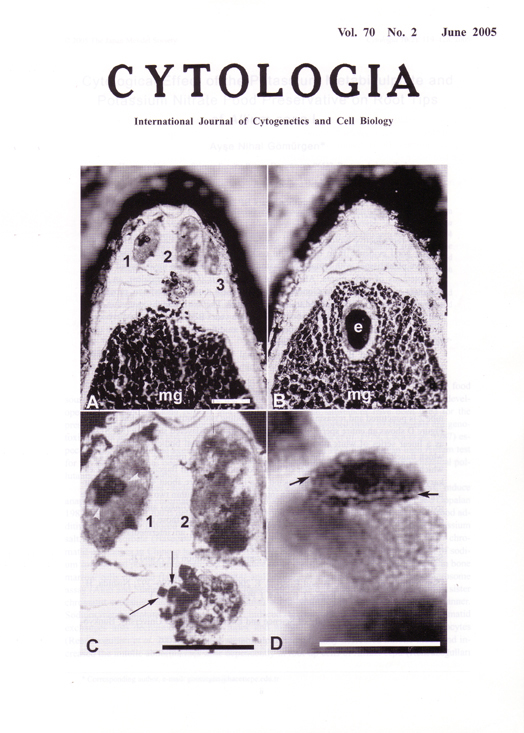| ON THE COVER |  |
|---|---|
| Vol. 70 No.2 June 2005 | |
| Technical note | |
|
|
|
| Fossil motile sperm of 250 million years BP in ovule of extinct
Gondwanan gymnosperm, Glossopteris. The reproductive biology of fossil plants is hardly known because of difficulties in finding good evidence from materials in rocks. However, permineralized fossils often Preserve plant tissues with remarkable anatomical details that help unveil broadbiological potentials of early plants. An ovule of Glossopteris (Glossopteridales), anextinct dominant gymnosperm of the Gondwana supercontinent during the Permian, provides an example of superb permineralized tissue preservation. The fossil was discovered in silicified peat from the Late Permian (about 250 million years BP) in Australia. Microscopic slides of silicified material were prepared by the modified acetate peel technique using full-strength commercial grade hydrofluoric acid. Figures A and B show serial longitudinal sections of one ovule containing a megagametophyte (mg) and a large pollen chamber above. The pollen chamber has fivedeveloped pollen tubes (only three shown in Fig. A). Only one archeogonium matures in the ovule, and contains a mature egg cell (e) in the megagametophyte. Figure C is an enlargement of Fig. A. There are two mature sperm in pollen tube 1 (arrowheads). Pollen tube 2 is punctured and releasing its contents including two motile sperm below (arrows). Figure D shows an entire sperm with part of the spiral multilayered structure (MLS) seen as a linear series of white dots (arrows) resembling the basal bodies or basal plate to which flagella are attached. The diameters of the basal bodies measure less than 0.3µm, which is very close to the diameter of basal bodies common in flagella and cilia of eukaryotes. The entire MLS is reconstructed as a linear structure about 45µm long, bearing more than 50 basal bodies at a mean interval of 0.57µm within two counterclockwise gyres. This configuration is similar to the sperm of cycads, Ginkgo and many pteridophytes. However, the Glossopteris sperm are much smaller than those of Ginkgo and cycads, and more similar to pteridophyte forms, representing an intermediate stage of motile male gamete evolution in vascular plants. Scale bars. A and C, 100µm,. D, 10µm. The same magnification for A and B. (See Nishida, H., Pigg, K. B. and Rigby, J. F. 2003. Nature 422: 396-397;
Nishida, H.,Pigg, K. B., Kudo, K, and Rigby, J. F. 2004.
J Plant Res. 117: 323-328.) |
|